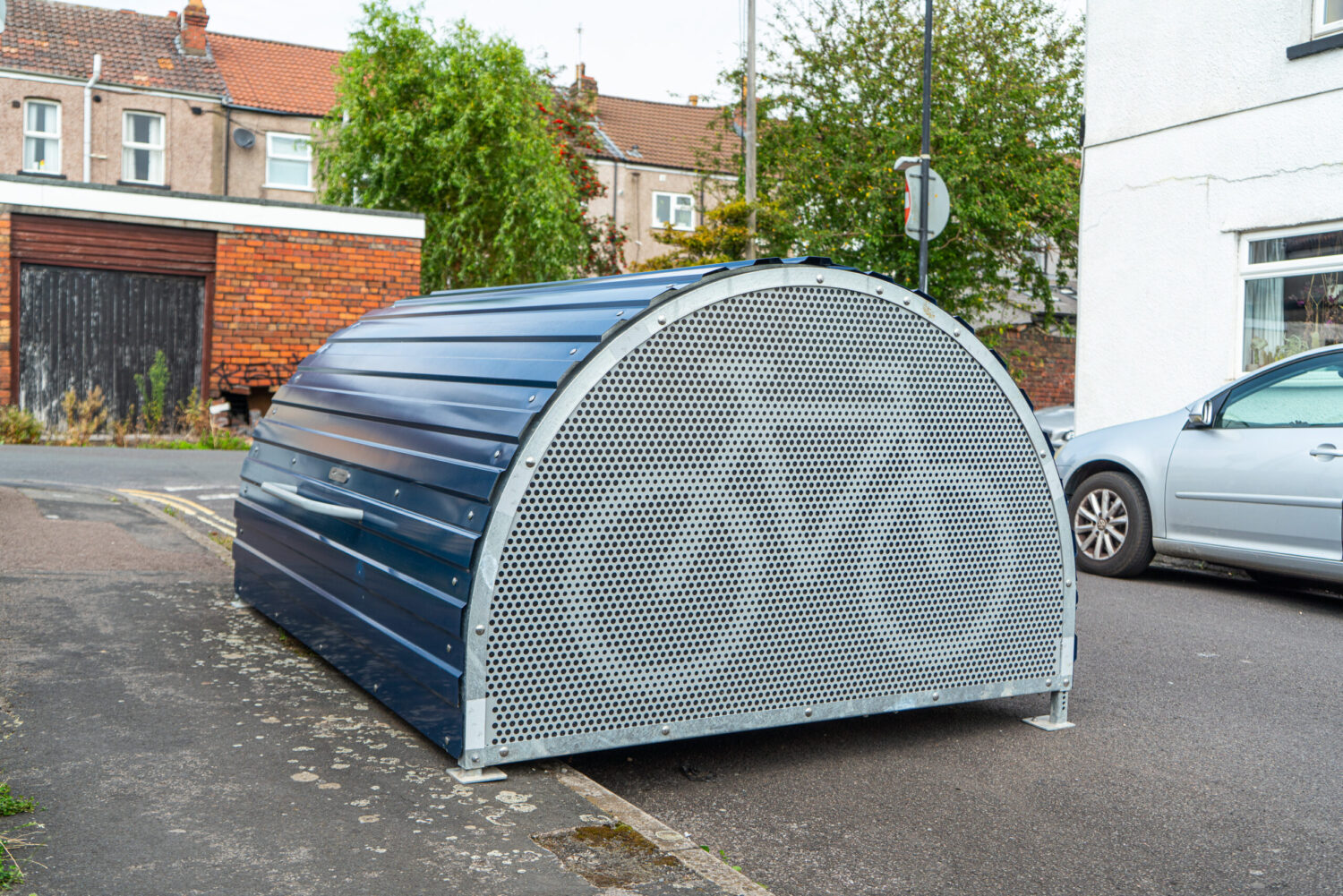As specialists in residential cycle parking, we’re well aware of the array of benefits that cycling offers. But the lack of secure, convenient parking at home can rob many people of the opportunity to cycle, a problem that disproportionately affects people on lower incomes.
To understand the problem and help identify solutions, we collaborated with sustainable transport charity Sustrans, to research the impacts and produce a report with actionable takeaways.
‘Residential cycle parking’ combines new data and existing research to analyse the provision of parking and make recommendations for government, local authorities, housing associations and planners.
How the data was gathered
The study gathered responses from a nation-wide representative survey of over 1,000 people of working age, who are either not in employment, or earn below £17,000 per year. Two focus groups were held with a total of 32 participants from across the country. A review of existing research was also undertaken, including Sustrans’ new study, ‘The cycling opportunity’, and ‘Clean Cities 2023 London secure cycle parking study’.
Why residential cycle parking is so important for people on lower incomes.
Transport is fundamental for people to access essential services, from jobs and education to healthcare and leisure. But the high cost of car ownership, or the limited provision of public transport can make everyday mobility expensive and impractical for those on lower incomes. While cycling is a relatively inexpensive option, lack of storage at home can make it unfeasible for many. This limits opportunities in many aspects of life. 32% of survey respondents did not have a secure convenient place to park their bike, equating to 3.7million people excluded from cycling.
It also prevents people from accessing the health benefits of cycling; including a reduced risk of cardiovascular disease and improvements to mental health.
What causes the disparity?
One factor that creates the disparity is the type of housing. People on low incmomes are more likely to live in high-density housing. These homes are far less likely to have access to secure storage space outside the home. Plus, as the majority of entrances are not at street level, storage inside the home is inconvenient or even impossible to access with a cycle, particularly for heavier types including e-bikes or non-standard cycles. Conversely those living in detached or semi-detached housing are more likely to have both storage space and more convenient access.
Areas of multiple deprivation also have a higher need for security; the survey showed that 15% of respondents either had their own bike stolen, or knew someone whose bike had been stolen within the previous year. Theft disproportionately affects those on lower incomes who are less able to afford insurance or replacements.
Drawing attention to these inequalities and potential for growth with in-depth research is the first step to addressing them. Cyclehoop, Sustrans and our colleagues from the active travel industry are here to support you in implementing positive change, to put an end to transport poverty and to make cycling safe, and secure, so everyone has the chance to experience the joy of cycling.
– Cyclehoop founder Anthony Lau, addressing MPs and Stakeholders at the launch event.
What can be done to improve access?
The report identifies key actions that government and local authorities can take to tackle inequality in cycle parking access. Among them are increasing secure communal cycle parking for apartment buildings, with a focus on areas of multiple deprivation. Where space is at a premium, an on-street solution such as the Bikehangar is ideal. Standards and regulations should also be put in place to ensure that new infrastructure is secure, accessible and fit for purpose.
Planning laws should be amended to allow bike storage units to be installed at the principal elevation (front) of buildings. New developments should be required to include secure, high quality cycle parking, ensuring a proportion of the facilities are accessible for disabled residents and non-standard cycles.
The report also acknowledges that other factors must be addressed to enable people to cycle, including improvements to cycling infrastructure on roads and secure cycle parking provision at the destination end of the journey.
For more information download the full report at Sustrans – Improving cycle parking for people on a low income.

